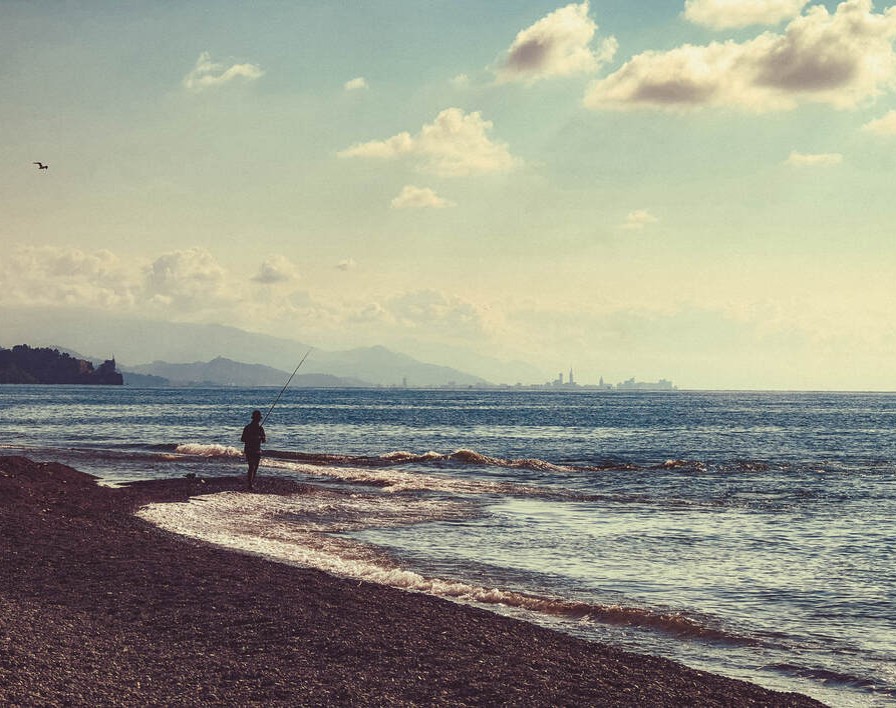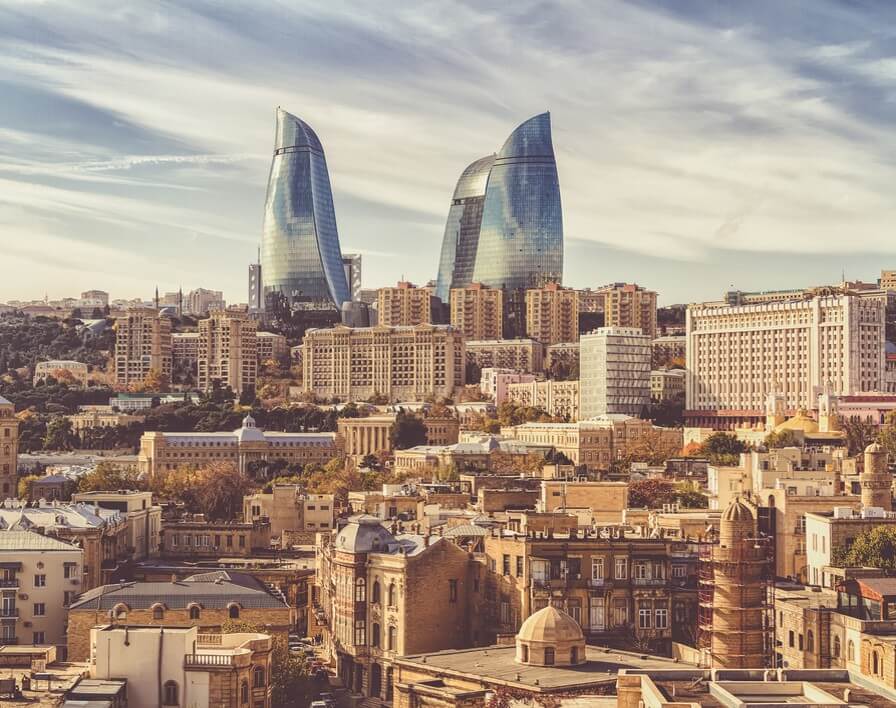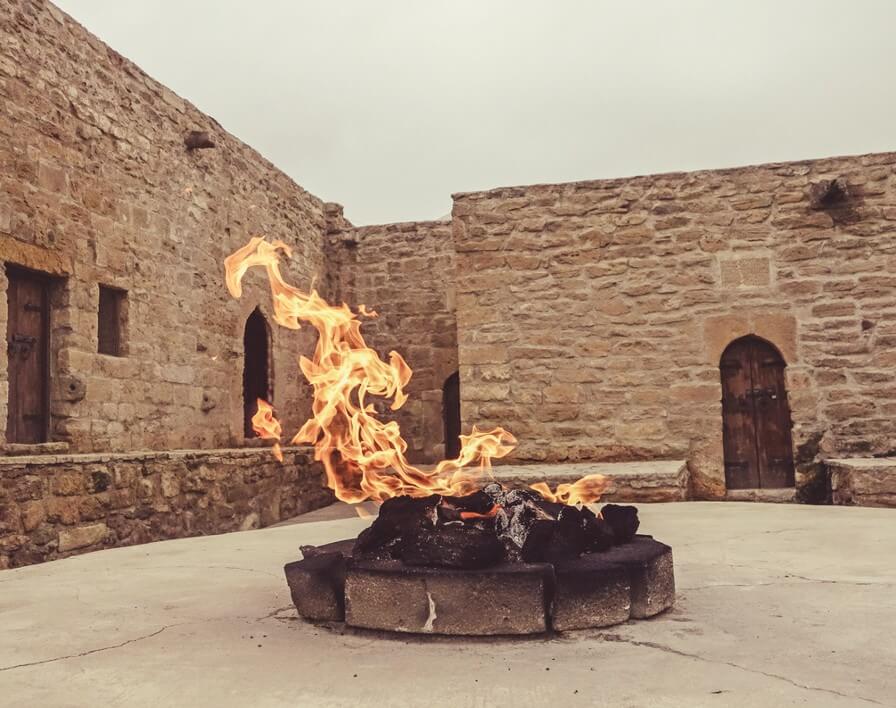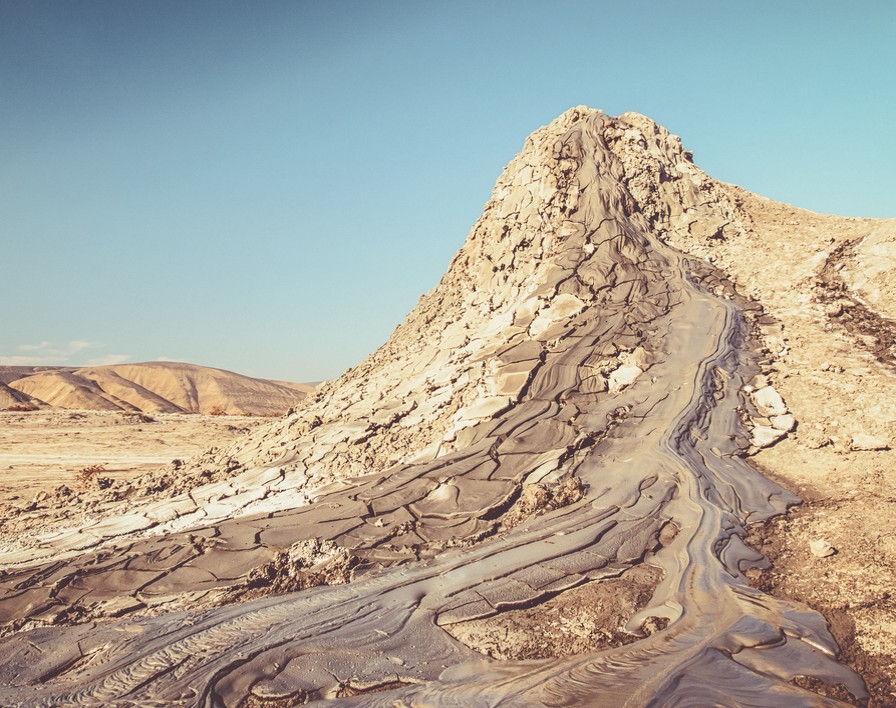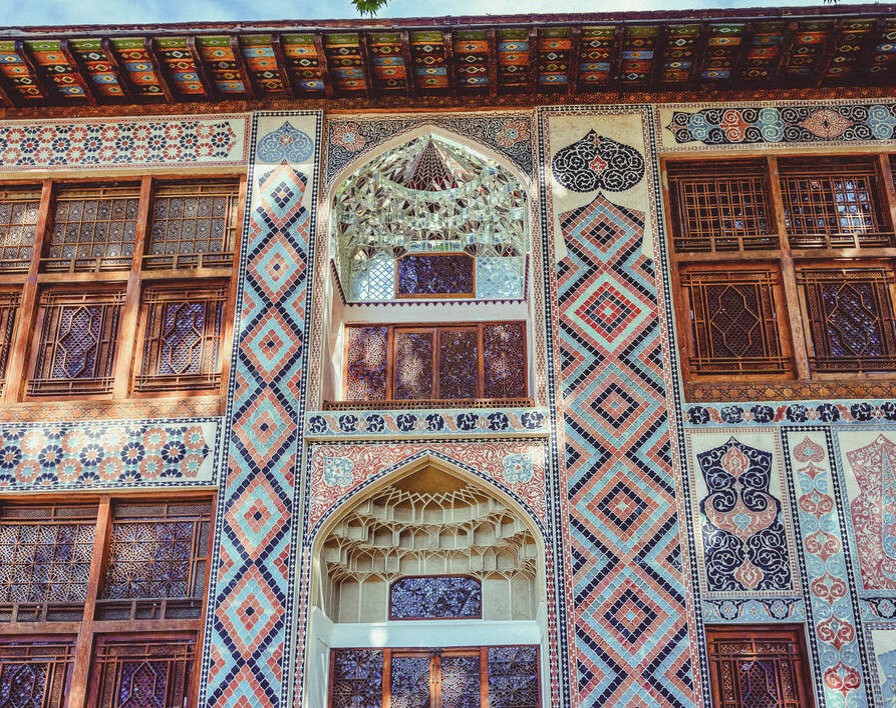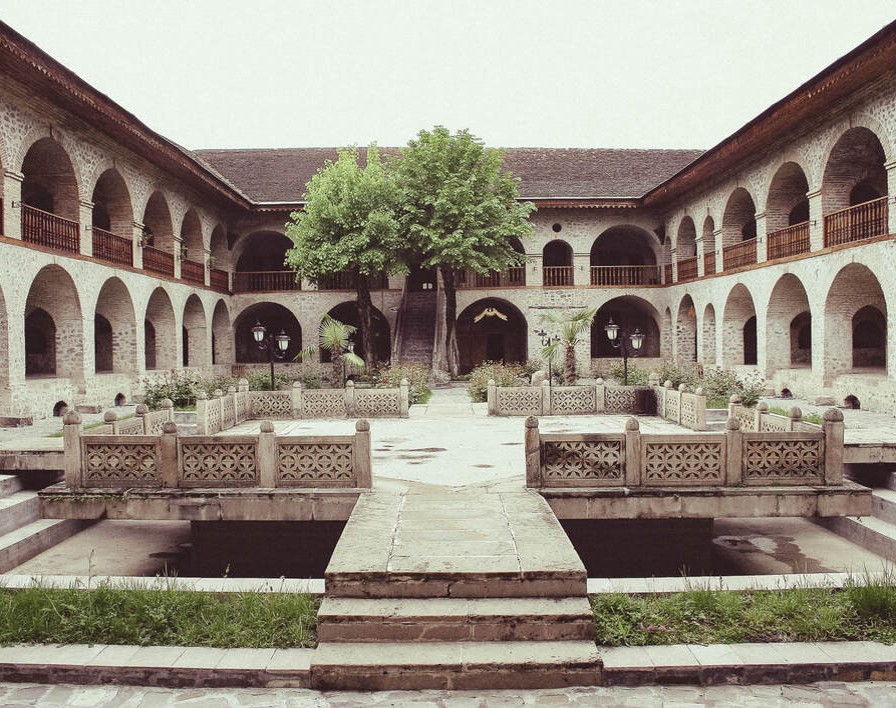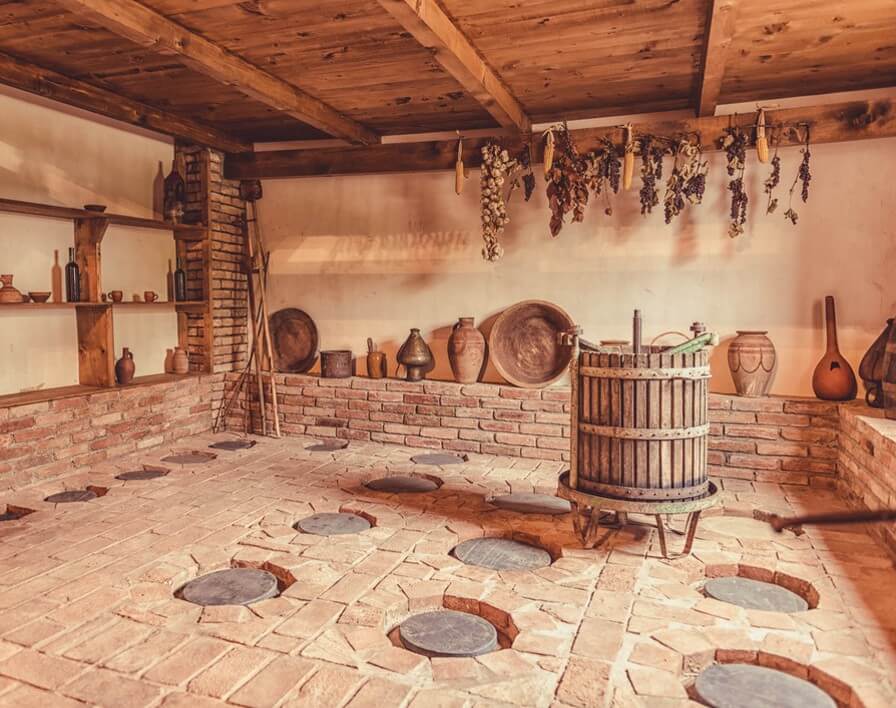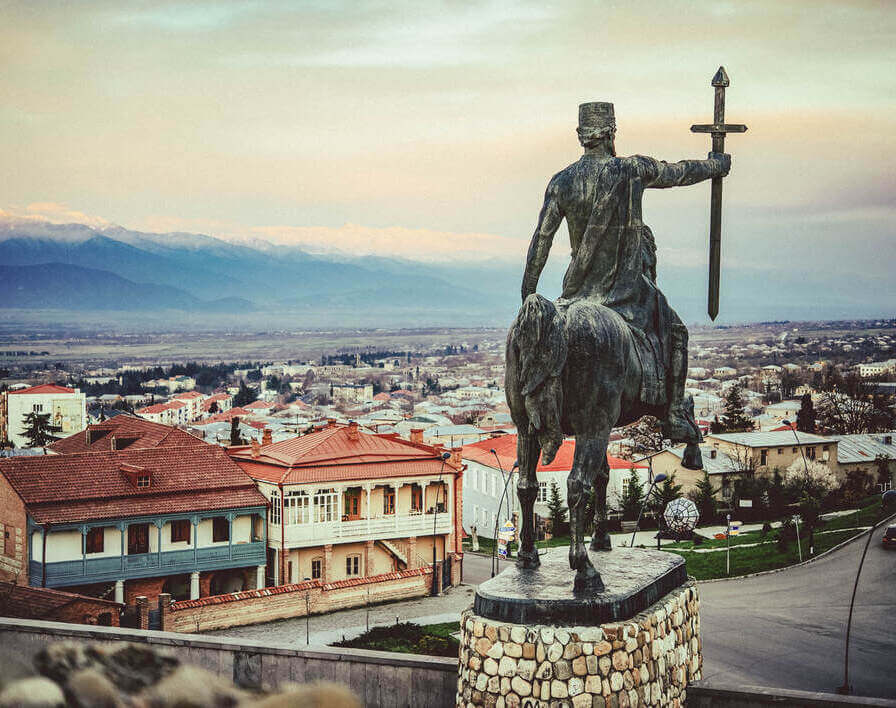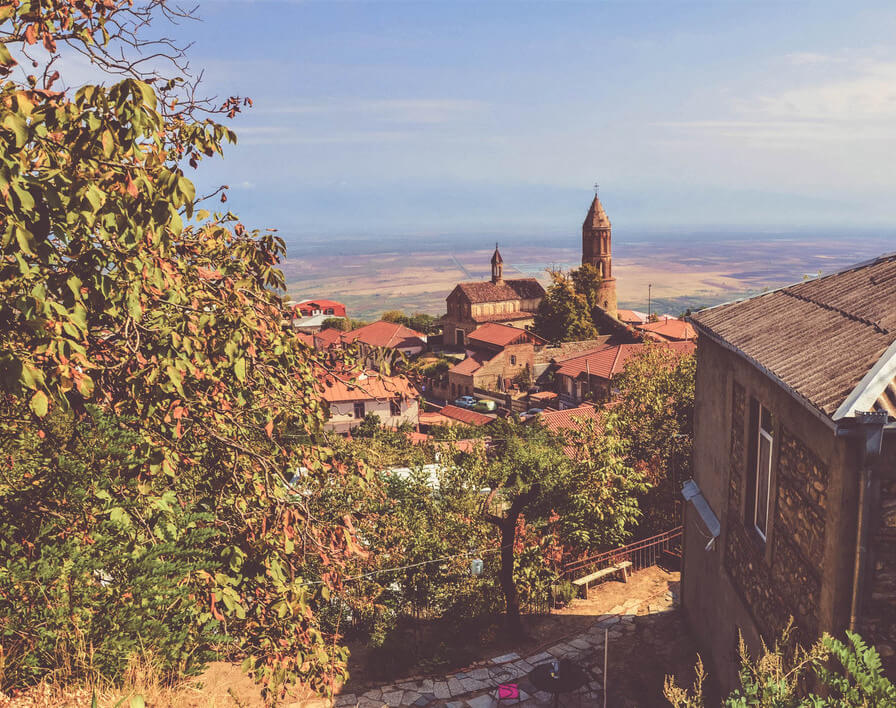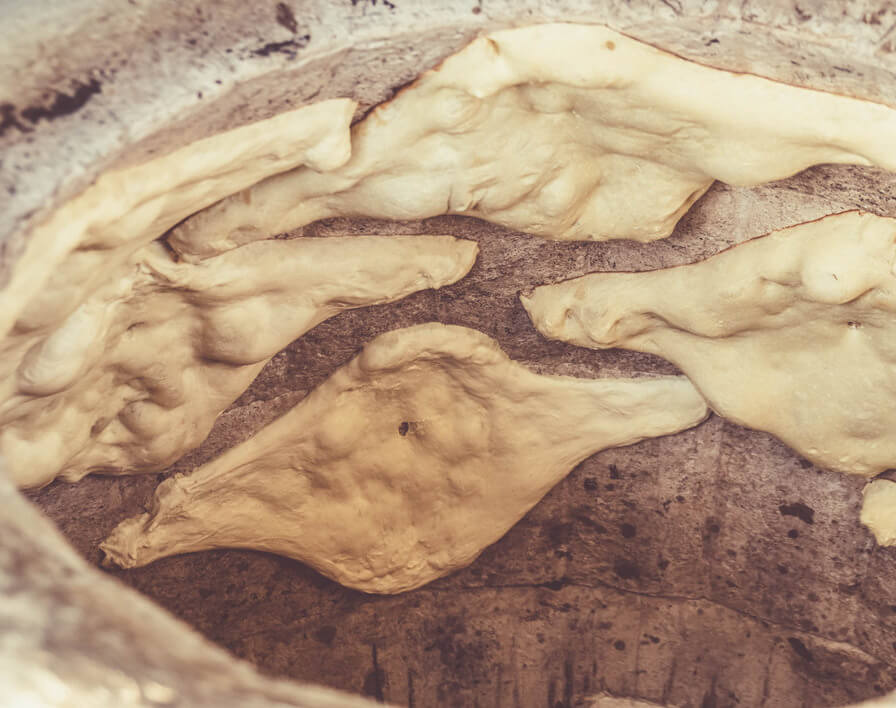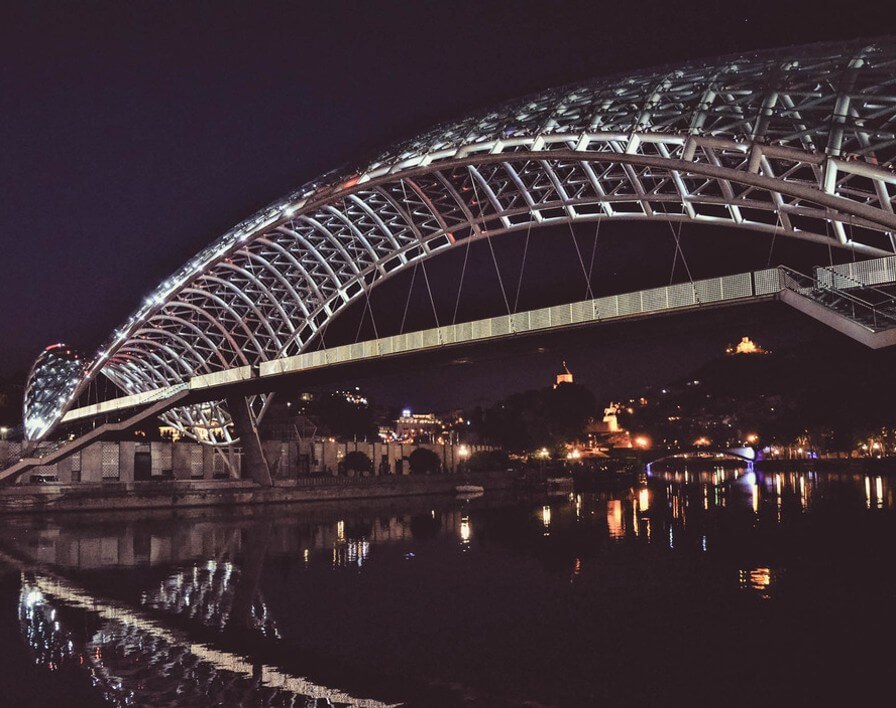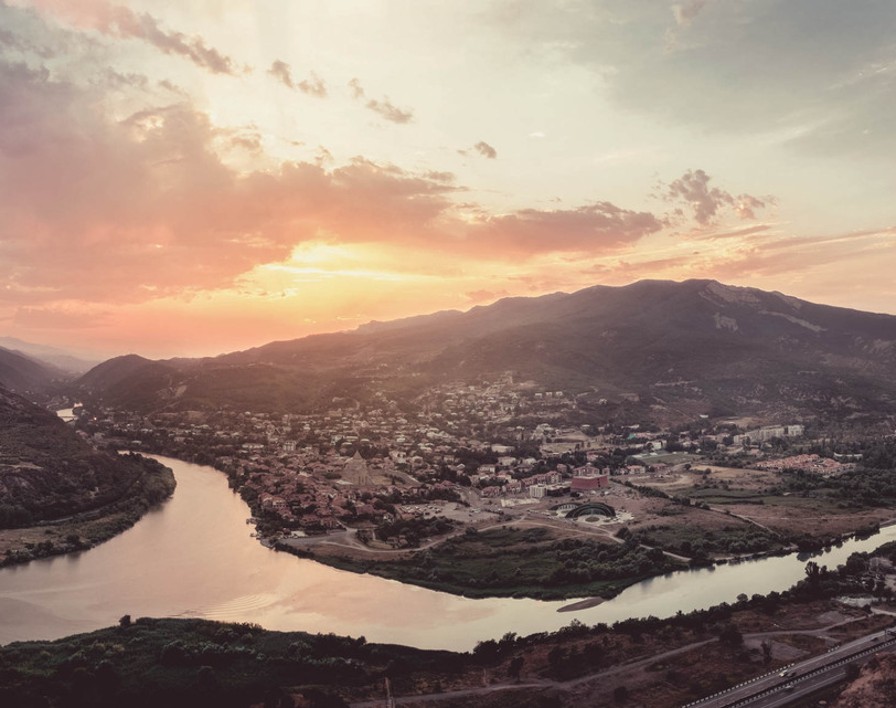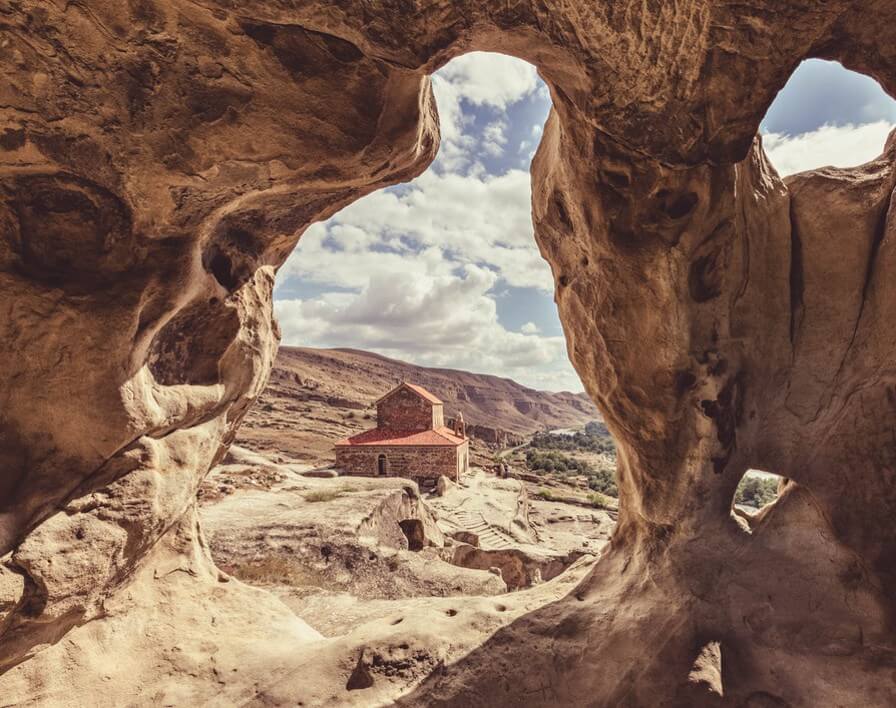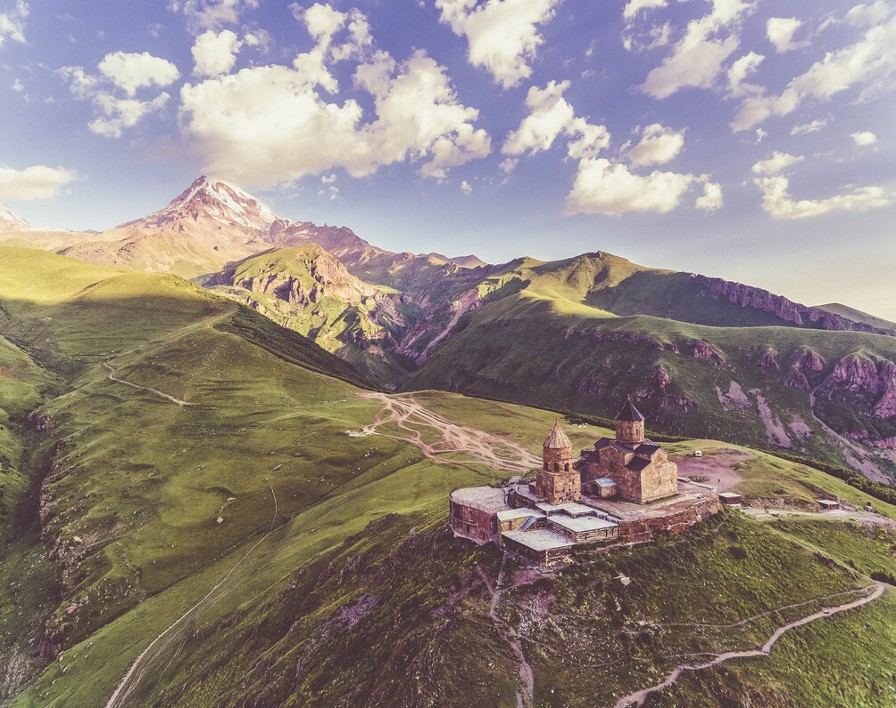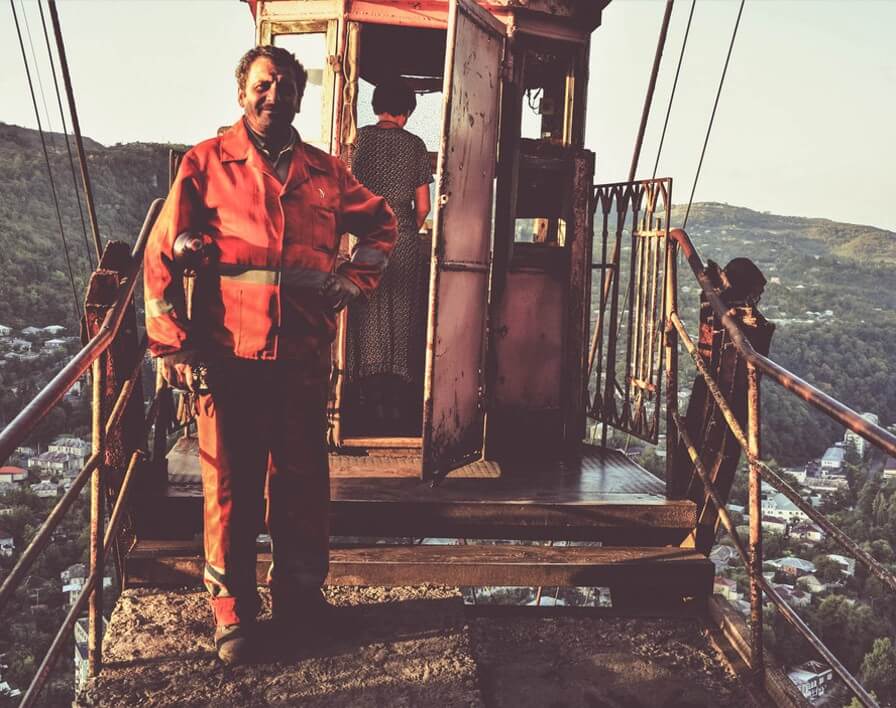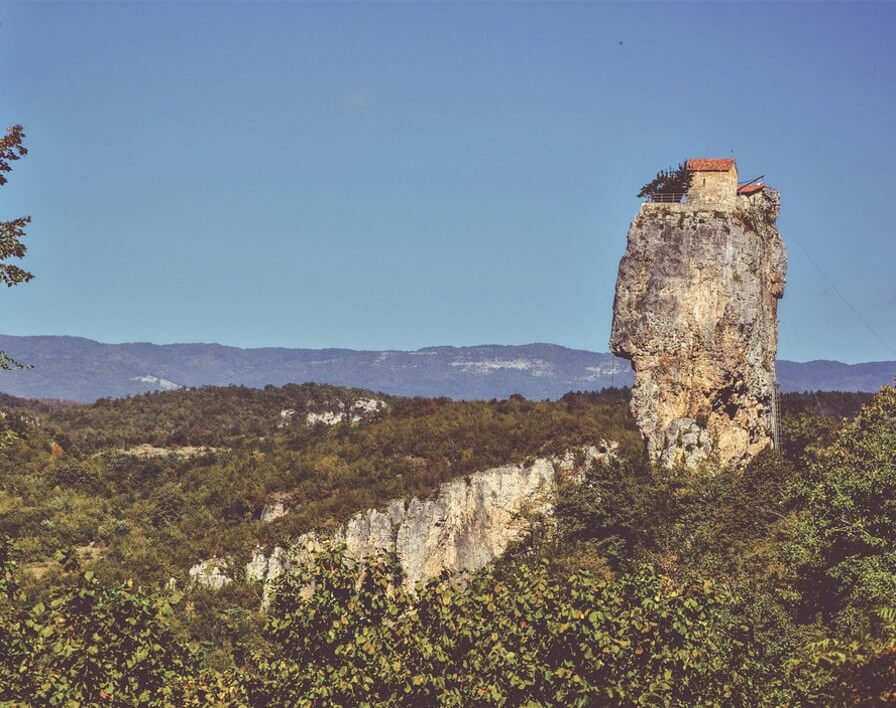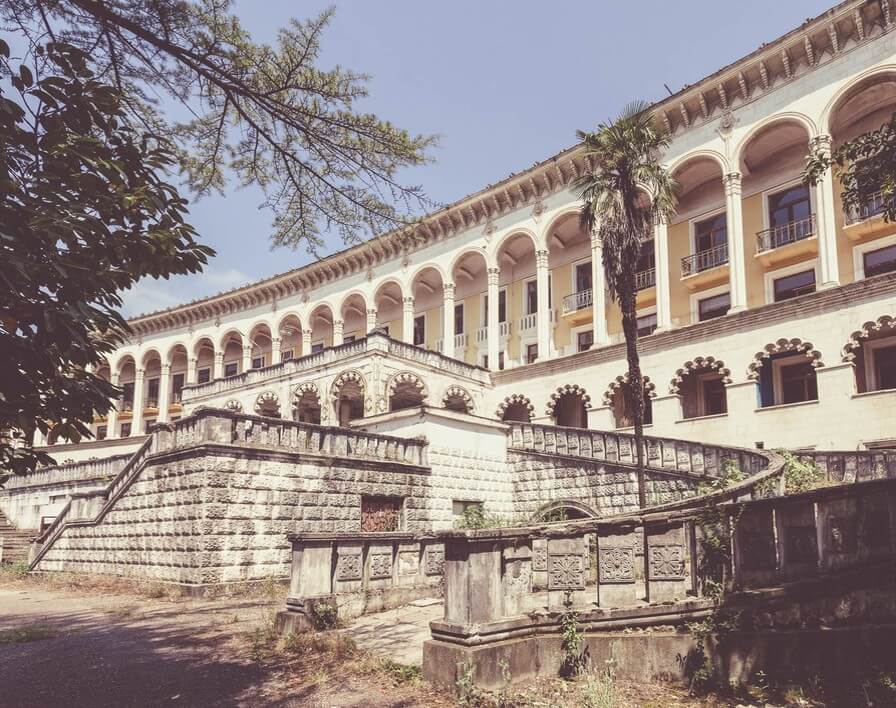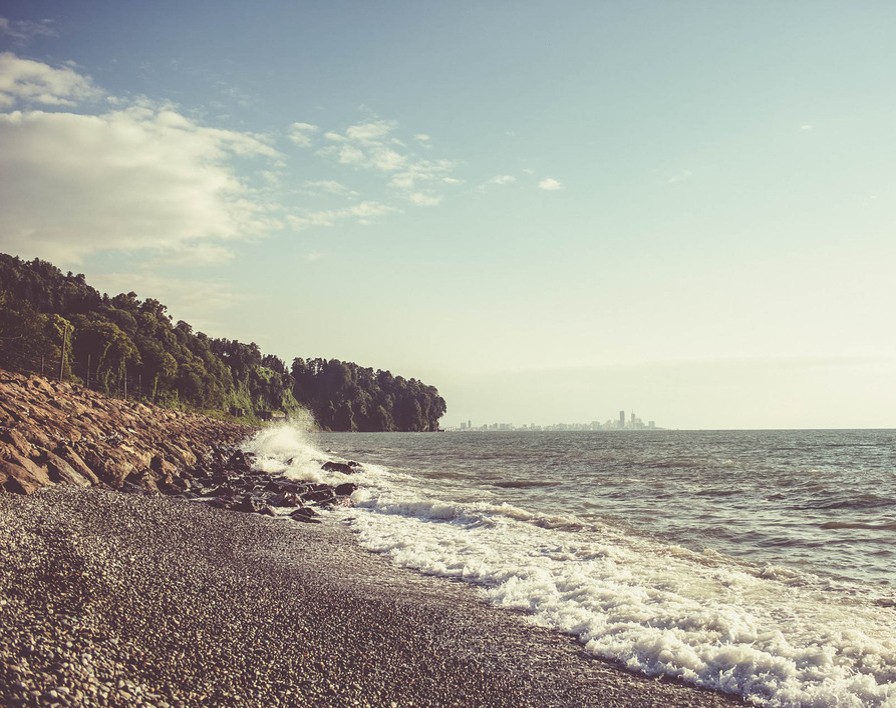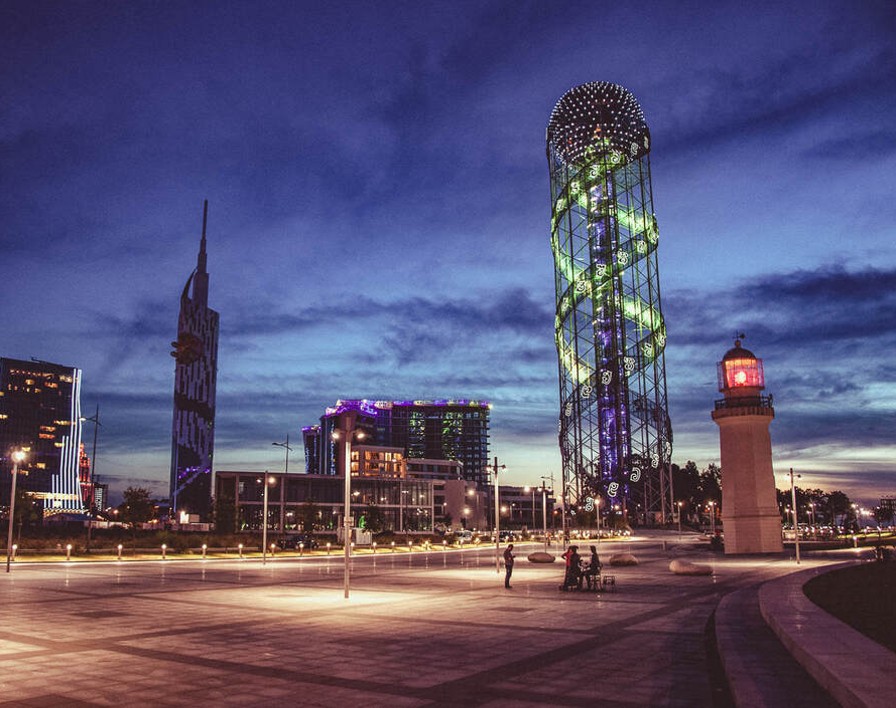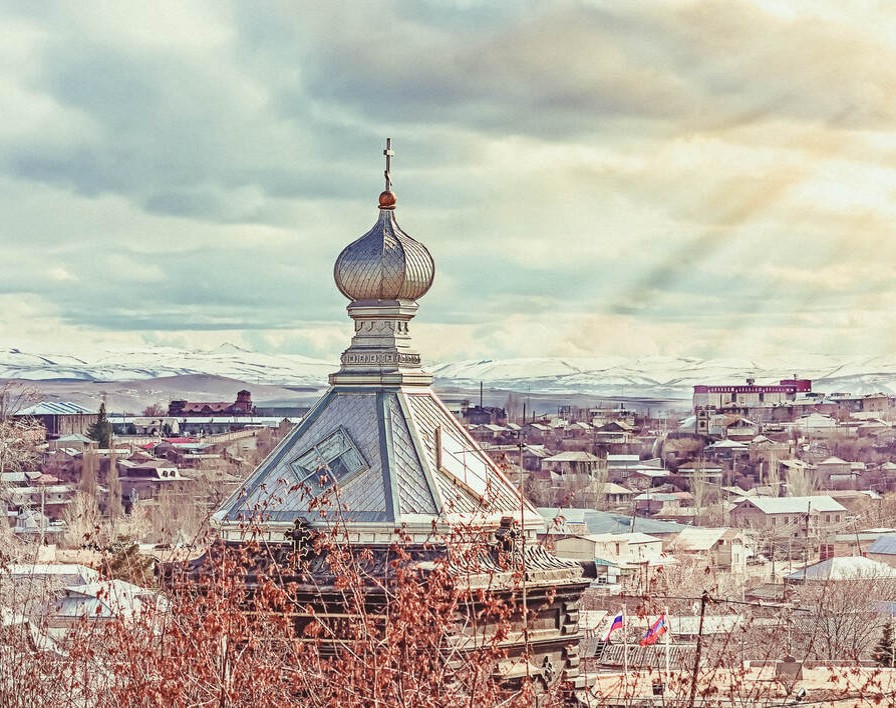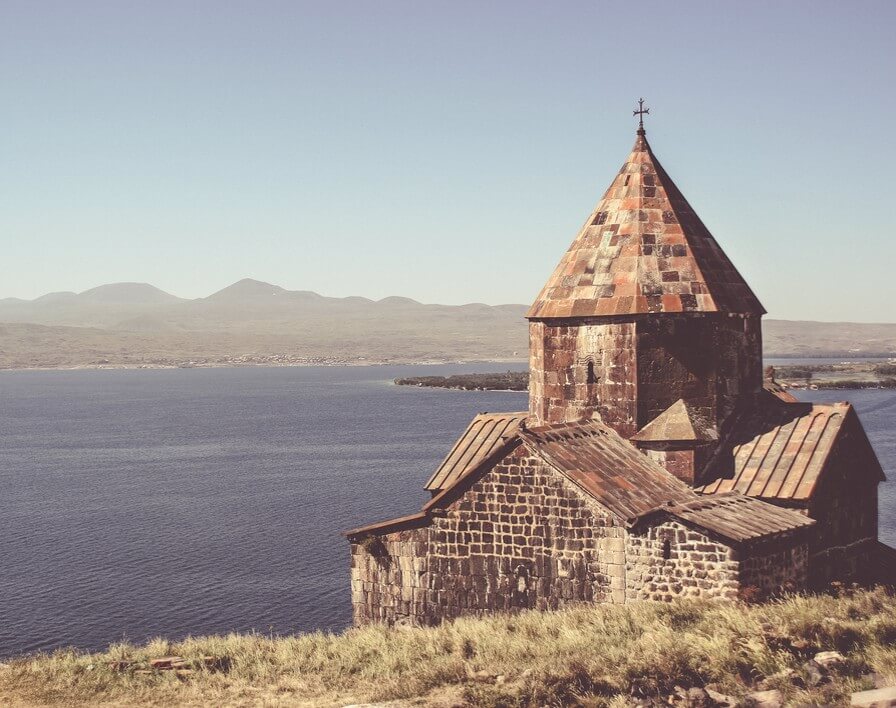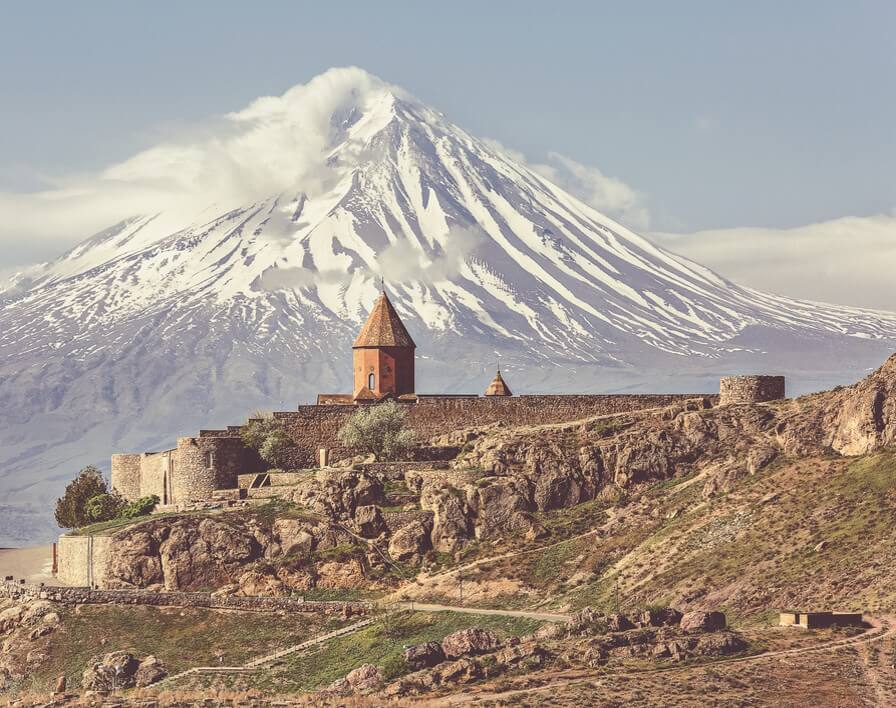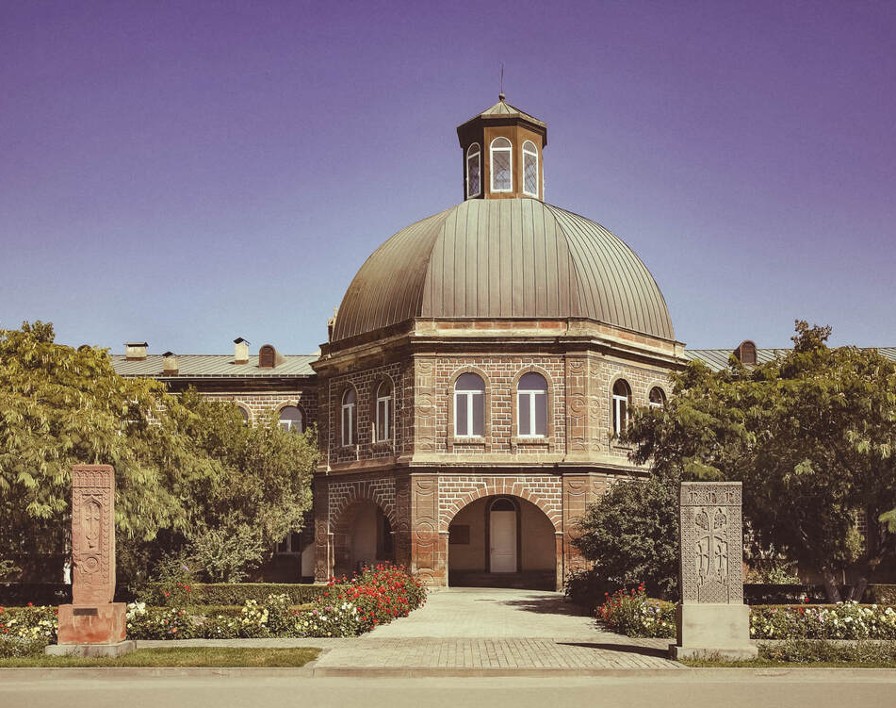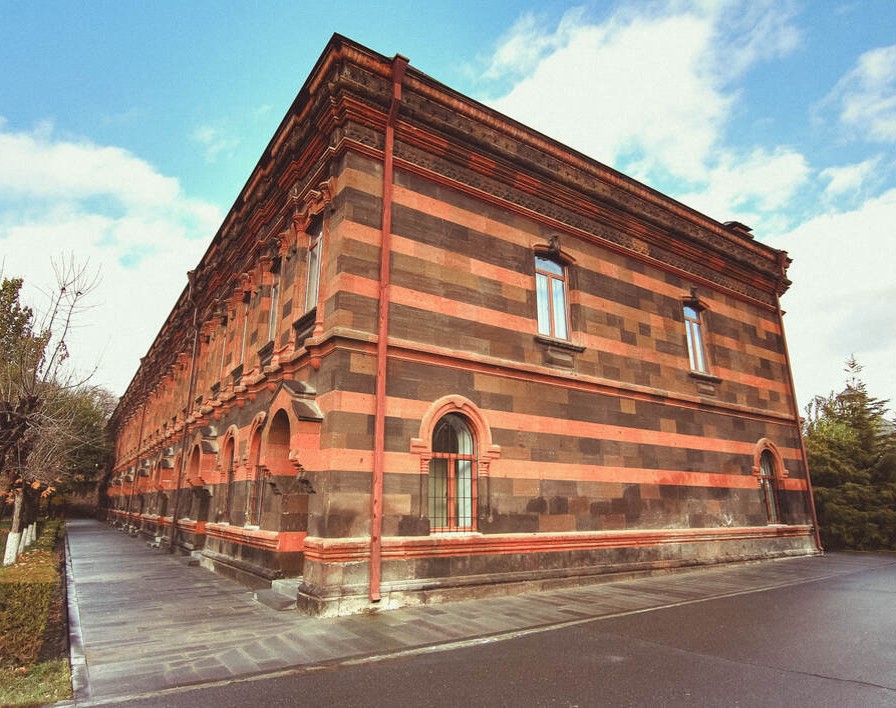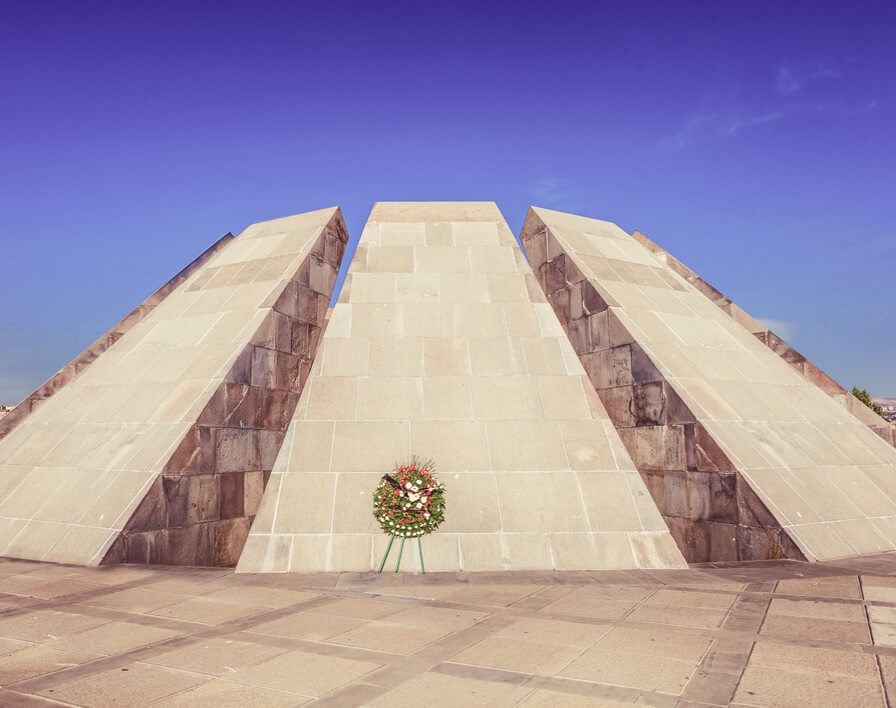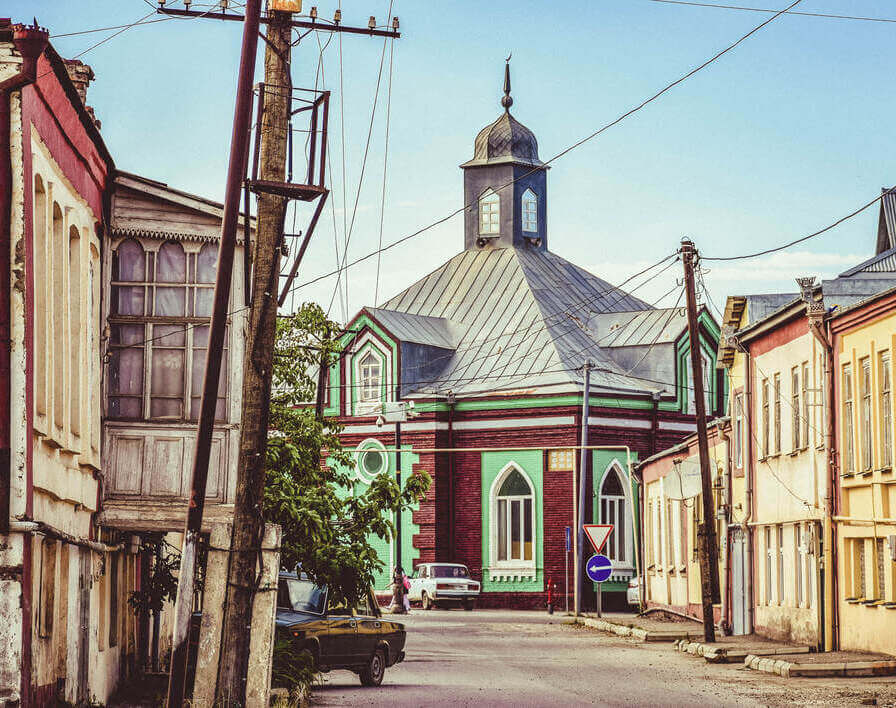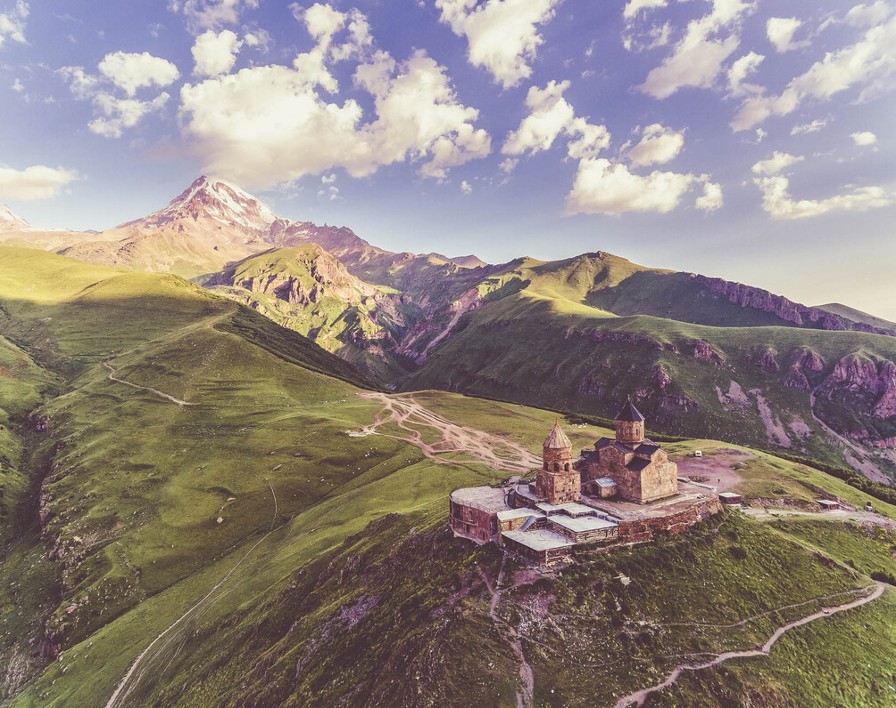During this authentic and unique road trip from the Caspian Sea to the Black Sea, you discover the beauty and the versatility of the fascinating Caucasus region, and you get to know Azerbaijan, Georgia, and Armenia at once.
- Baku
- Yerevan
- April - October
- 4- or 3-star hotels, guesthouses
Azerbaijan, Georgia, and Armenia in 3 weeks
In about 3 weeks you will discover almost everything this diverse region has to offer: the wild mountain ranges of the Greater and Lesser Caucasus, the wine regions in Georgia and Armenia, both the Caspian and the Black Sea, mosques, monasteries, old towns of the Silk Road and the three capitals Baku, Tbilisi and Yerevan.
This trip is the best way to get to know the South Caucasus region with all its aspects.
Highlights
- Baku, Tbilisi and Yerevan
- Caspian & Black Sea
- Gobustan mud volcanoes
- Azerbaijani mountain villages
- Silk Road town of Sheki
- Wine tastings in authentic & small wineries
- Gergeti Trinity Church
- Vardzia & Uplistsikhe cave towns
- Chiatura's flying coffins
- Dilijan National Park
- Noratus Cemetery
- Geghard Monastery
- Khor Virap & Mount Ararat
Itinerary
After your landing at the Baku International Airport, your guide will receive you and bring you to your accommodation.
You get a general idea by viewing the city from above. Highland Park is offering an exceptional perspective. We walk along the Martyrs' Alley, a cemetery dedicated to the people who were killed during «Black January» 1990 and in the Nagorno-Karabakh War (1988–1994), and visit the Shahidlar Monument with its eternal flame.
You walk down to the Carpet Museum and later we proceed to the old town, which is part of the UNESCO World Heritage. The oldest part of Baku is surrounded by walls and contains different remarkable treasures.
You visit the Palace of the Shirvanshahs (15th/16th centuries), the Bukhara Caravanserai and the Maiden Tower, whose history and purpose is still not clear despite numerous theories.
60 km south-west of Baku you visit another UNESCO World Heritage Site: the Gobustan State Historical and Cultural Reserve. In the Museum of Petroglyphs, you learn about the long history of this area rich in archeological monuments and more than 6,000 rock carvings on average dating back to 5,000 - 20,000 years.
You enjoy a walk in the park to discover carvings, cave paintings and bizarre geological formations. The next highlights are the mud volcanoes, which you reach after a short 4x4 ride through the wild and dry nature. The scenery seems to be from a different world, where the silence is only interrupted by the gurgling and bubbling noises from the volcanoes with their small eruptions of cold mud.
Via Shamakhi, where you visit the Jummah Mosque, you drive to Lahic, which is famous for its cobblestone streets and its craftsmanship.
From Lahic you drive westwards along the slopes of the Greater Caucasus range to Sheki, which is one of the larger cities in Azerbaijan. Sheki, a Silk Road town with approximately 60,000 inhabitants, went through a turbulent history and was invaded by the Persians, the Romans, the Parthians, the Arabs, the Mongols and other occupants, in a final step by the Soviets.
You visit the Old Town and the Palace of Shaki Khans which are part of the UNESCO World Heritage. And you immerse yourself in the times of the Silk Road when you visit the two Caravansaries from the 18th century.
Only 5 km (3 miles) outside Sheki there is another important monument: the Church of Kish, which was part of the ancient «Church of Caucasian Albania». Albania was a state which covered today’s western Azerbaijan and southern Dagestan and which existed from the 2nd century BC until the 8th century AD.
From Sheki it’s a 2 hours journey to the border with Georgia, where you change the guide and the vehicle.
On the edge of this small village in the Kvareli region, Fabio, the founder of MyCaucasus Travel, has a vineyard. Depending on the time of year you can help with the grape harvest or simply get a guided vineyard tour.
The next stop is the Gremi Fortress. The complex built in the 16th century consists of the Archangel Church, a three-storey castle, a bell tower and a wine cellar. The evening and night you will spend in Telavi, the capital of Kakheti.
In the morning, you visit the most important landmarks and sites of Telavi during a guided city tour. From Telavi, you drive all along the Alazani Valley to Sighnaghi, the city of love.
In Sighnaghi, you enjoy a wine tasting at Okro's, one of the best winemakers in Georgia and one of the pioneers in natural winemaking. After a lunch in a restaurant, you explore the highlights of Sighnghi such as the city wall and the old town.
On the way back to Tbilisi we have a stopover in Badiauri, where you taste fresh Kaketi-style bread from the oven and home-made chees specialties.
After your arrival in Tbilisi, you can discover the city on your own or just relax in your accommodation or in oine of the cozy cafes in Georgia's capital.
This day is fully dedicated to the Georgian capital Tbilisi: You start your city walking tour in the Old Town, where you visit the Narikala Fortress, built in the 4th century by a Persian ethnarch. The fortress is accessible both by foot and by cable car.
From there you go down to the Abanotubani district with its sulfur baths – after Narikala the second eldest part of Tbilisi. According to the Georgian Chronicles, Tbilisi was founded in the 5th century by King Vakhtang Gorgassali I, which was impressed by the hot springs in this area. These springs actually gave Tbilisi its name because in Georgian «tbili» means «warm».
You continue your tour and visit the Bridge of Peace, the Dry Bridge Flea Market and other highlights. For dinner, you're invited to one of the best restaurants in Tbilisi offering amazing food and a great view.
In the morning you visit the ancient capital Mtskheta with its UNESCO World Heritage Sites. This includes the Jvari Monastery from the 6th century, located on a hill above Mtskheta. The true highlight of this place is the amazing view at the confluence of the two rivers Aragvi and Mtkvari down in the valley. After that, you visit Mtskheta's most impressive building: the Svetitskhoveli Cathedral from the early 11th century.
On the Georgian Military Road, which connects Tbilisi and Vladikavkaz in the Russian Republic of North Ossetia-Alania, you drive to the north. On the shore of Zhinvali Reservoir, you visit the Ananuri Fortress.
You continue your journey more and more into the mountains of the Greater Caucasus. In Georgia’s ski resort number one, Gudauri, you can have a 7.5 km long cable car ride that takes you to Kobi.
On your way to Stepantsminda, you might have a stopover in Sno as well: This small town is famous for its mineral water which people drink in the whole country.
In the morning you visit one of Georgia's most important landmarks: the Gergeti Trinity Church, built in the 14th century on a hill above Stepantsminda.
In the early morning, it is also possible to catch a glimpse of Mount Kazbek, which is often hidden behind clouds later in the day. Before lunch, you can have a short hike to the Gveleti Waterfalls, which are located about 5 km south of the Russian border.
Later you drive back on the Georgian Military Highway to Tbilisi. On our way, you may have a stopover near Gudauri, where you enjoy some breathtaking views from the Gudauri Viewpoint.
Your first stop on the way to the western part of Georgia is Uplistsikhe. Uplistsikhe is a cave town and one of the oldest urban settlements in Georgia. Besides various accessible caves, one of the highlights is the Christian basilica from the 9th and 10th century located at the summit of the complex. From there you enjoy a gorgeous view.
Not far from Uplistsikhe you visit a good friend of ours in his house in the village of Khidistavi. Tsotne is a wine-maker who only produces natural wines according to the ancient Kvevri method. In his beautiful garden, you can taste various home-made wines and enjoy a decent lunch. If you're interested, you can optionally visit the nearby city of Gori.
You spend your evening in Ateni, where another wine-maker, Nika Vacheishvili, is running a cozy guesthouse. Outstanding wines and delicious food is waiting for you there as well.
On your to Western Georgia, you will pass some of the most interesting sites in Georgia.
In order to make this day unforgettable, you do not take the fastest way, but the less common one via the Upper Imereti Road. Following this road, you arrive in the industrial city of Chiatura, which is neither touristy nor beautiful, but definitely very interesting.
Due to its location in a narrow valley and surrounded by steep mountains, it was not easy to bring the workers to the manganese mines and the material back from there. This is why the Soviet occupiers built more than 70 cable cars, several of which are still in use today. If the cable cars are running and you're not afraid of heights, let's have a ride with the «flying coffins» (this is the way the locals call their ropeways).
You continue your trip to see the Katskhi Pillar, a huge monolith of limestone, which towers above the surrounding forests and hills with its 40 meters. On top of the stone column, there is a small church, which is obviously difficult to access.
For dinner and overnight stay we drive to Kutaisi, Georgia's third-largest city.
In the morning, we visit the farmer's market in Kutaisi that is said to be one of the most beautiful ones in Georgia. Besides this, you can visit the Bagrati Cathedral in Kutaisi.
The next destination is the Prometheus Cave located in Kumistavi. With a total length of 11 km, of which 1’060 meters are open to guests, it is one of the biggest caves in the country. From there you drive to the Martvili Canyon, where you can have a walk or enjoy the green and clear water on a short boat trip.
On the way back there's a stopover in Tskaltubo. During Soviet occupation, this was one of the most popular spa resorts. Today Tskaltubo is somewhere between decay, reconstruction, melancholy and hope: not beautiful, but definitely one of the most interesting places in Georgia. You can visit there some abandoned sanatoriums as well.
You leave the region of Imereti, drive through Guria and reach the south-western Georgian region of Adjara. Before you arrive at our final destination Batumi, you make a stopover to explore the Botanical Garden nearby.
Established in the 1880s, the reserve stretches along the steep subtropical Black Sea coast and is home to more than 5,000 species, including over 3,200 different tree species.
From there It is only a few kilometers to your accommodation in Batumi. Georgia’s second-largest city is pretty crowded during summer. Besides the historic old town, there are very modern buildings too, such as the Alphabet Tower, casinos and luxury hotels. One can feel the Turkish influence: The distance to the Turkish border is less than 20 km (12 miles).
Today you discover the treasures of Batumi on a guided city tour. Depending on your wishes, there are various places of interest to visit. Among other things, you can take the cable car up to the local mountain and enjoy the amazing view at Batumi, the surrounding green hills and the Black Sea.
Today you head east into the Samtskhe-Javakheti region. Before that, you have to cross the Goderdzi Pass, one of the highlights of every tour in Georgia.
After about one hour of driving, a stop is recommended to visit the Makhuntseti Bridge. This old stone bridge over the river Ajaristskali is 24 meters long and slightly curved. Depending on the season, a short swim in the river or under the nearby Makhuntseti Waterfall is also an option.
Afterward, the route continues on into the Adjarian mountains and finally over the Goderdzi Pass. From the top of the pass, it takes about 1.5 hours to Akhaltsikhe, which means «Newcastle» in English.
Today's journey takes you through the beautiful landscape of Samtskhe-Javakheti and all the way to Armenia. If you did not visit it the evening before, you will get a visit to the Rabati Fortress after the fortress that towers above the town of Akhaltsikhe. The architectural complex is mainly from the 17th and 18th centuries.
Afterward one of the highlights of the country waits for you with Vardzia shortly before leaving Georgia. The cave city from the 12th century was hewn directly into the rock of a steep cliff and was once built for no less than 50,000 inhabitants. To visit the different caves and passages is very impressive.
From Vardzia it takes two hours to the Armenian border and another hour to Gyumri. Depending on the time, you can take a short walk in the city center and visit for example the church St. Mary or the National Architecture Museum.
Shortly after Vanadzor, Armenia's third-largest city, a stopover in Lermontov is a good idea. Lermontov is a typical Russian village in Armenia, which is architecturally very different from the surrounding Armenian villages.
You reach Dilijan, a small town with about 16'000 inhabitants. There is enough time to go for a short hike in the afternoon in the beautiful Dilijan National Park.
There are 11 different marked eco-trails in the National Park, which are ideal for exploring beautiful nature. The shortest routes take only 30 minutes and are also suitable for inexperienced hikers or families with small children. More challenging routes take several hours.
After a short drive through the mountains, the nature in the region of Lake Sevan looks very different. Lake Sevan is the fifth largest mountain lake in the world. It lies at 1,900 meters above sea level, is 78 km long and up to 56 km wide. Near the lake you will learn from locals how they make their traditional cheese – tasting included. The lake and the surrounding mountains can best be admired on a short boat trip.
Afterwards, the trip takes you along the western shore of the lake to the Noratus Cemetery. There are about 900 Khachkars on the medieval grave field – a larger number cannot be found anywhere else in the world. The oldest gravestones date from the 1st century.
The trip continues south to Areni, which is only about 2 km from the border of the Azerbaijani exclave of Nakhchivan. Areni is one of the wine centers of Armenia. Not long ago a cave was discovered there, which must have been inhabited in the Stone Age and the Copper Age. In the cave was also found the oldest wine press in the world (3,000 BC).
In Areni you can visit a wine factory and taste Armenian wines. Overnight stay in Areni.
Today's excursion takes you to some of the most important sights of Armenia. The first stop is the monastery Khor Virap. Since it is located on a small hill near the Turkish border, it is one of the best places to see Mount Ararat – especially in the morning when the view is still clear. Therefore you leave Areni already in the early morning.
You continue to Garni, where you will visit the Hellenistic temple from the 1st century. A short hike to the Symphony of Stones will take you to the Garni Gorge with its bizarre rock formations and basalt columns.
After a 20-minute drive, you will reach the Geghard Monastery (UNESCO World Heritage Site). Some of its churches are completely hewn into the surrounding rocks, which makes the monastery unique. From Geghard you go to the capital city of Yerevan.
Your last full day in Armenia is dedicated to the capital Yerevan and Armenia's holy place called Echmiadzin. In the morning you will enjoy a city walking tour in Yerevan which will contain some of the most important and impressive sights of Armenia's capital.
You visit the Cascade Monument with its 572 steps, you enjoy the panoramic view from the top of the monument and you visit the Opera House, the Republic Square and the Armenian Genocide Memorial on the hill of Tsitsernakaberd.
In the afternoon there will be an excursion to Echmiadzin. Today officially called Vagharshapat, the holy city is famous for its cathedral and the two churches St. Gajane and St. Hripsime. After the visit to these important buildings, we drive to Yerevan. You enjoy a free evening in the capital of Armenia, where you can taste delicious Armenian food, wine and cognac.
We pick you up in front of your accommodation in Yerevan and take you to the airport, which will take approximately half an hour.
Route
Prices
Price includes
- 21 x overnight stay incl. breakfast according to the itinerary
- 4 x lunch and 3 x dinner according to the itinerary
- 4 x wine tasting
- 2 x cable car ride
- 1 x boat trip
- 1 x Armenian cheese masterclass
- Experienced driver/guide
- Comfortable vehicle incl. AC
- Fuel for the whole tour
- Entrance fees to all sights mentioned in the itinerary
- Local taxes
- 2 x airport transfer
- Mineral water 0.5l per day
- Overnight stays for guide and driver
- Meals for guide and driver
Price does not include
- International flights
- Personal expenses (e.g. souvenirs)
- Visa fees
- Upgrades to other hotels or other rooms compared to the itinerary
- Tips and extras in the hotels
- Additional alcoholic beverages
- Additional services not described in the itinerary
The war between Armenia and Azerbaijan does affect life in both countries, but not your safety during this tour. The fighting is limited to the disputed territory of Nagorno-Karabakh (Artsakh), which we surround extensively.


